Toll-like receptor 3 activation selectively reverses HIV latency in microglial cells
- PMID: 28166799
- PMCID: PMC5294768
- DOI: 10.1186/s12977-017-0335-8
Toll-like receptor 3 activation selectively reverses HIV latency in microglial cells
Abstract
Background: Multiple toll-like receptors (TLRs) are expressed in cells of the monocytic lineage, including microglia, which constitute the major reservoir for human immunodeficiency virus (HIV) infection in the brain. We hypothesized that TLR receptor mediated responses to inflammatory conditions by microglial cells in the central nervous system (CNS) are able to induce latent HIV proviruses, and contribute to the etiology of HIV-associated neurocognitive disorders.
Results: Newly developed human microglial cell lines (hµglia), obtained by immortalizing human primary microglia with simian virus-40 (SV40) large T antigen and the human telomerase reverse transcriptase, were used to generate latently infected cells using a single-round HIV virus carrying a green fluorescence protein reporter (hµglia/HIV, clones HC01 and HC69). Treatment of these cells with a panel of TLR ligands showed surprisingly that two potent TLR3 agonists, poly (I:C) and bacterial ribosomal RNA potently reactivated HIV in hμglia/HIV cells. LPS (TLR4 agonist), flagellin (TLR5 agonist), and FSL-1 (TLR6 agonist) reactivated HIV to a lesser extent, while Pam3CSK4 (TLR2/1 agonist) and HKLM (TLR2 agonist) only weakly reversed HIV latency in these cells. While agonists for TLR2/1, 4, 5 and 6 reactivated HIV through transient NF-κB induction, poly (I:C), the TLR3 agonist, did not activate NF-κB, and instead induced the virus by a previously unreported mechanism mediated by IRF3. The selective induction of IRF3 by poly (I:C) was confirmed by chromatin immunoprecipitation (ChIP) analysis. In comparison, in latently infected rat-derived microglial cells (hT-CHME-5/HIV, clone HC14), poly (I:C), LPS and flagellin were only partially active. The TLR response profile in human microglial cells is also distinct from that shown by latently infected monocyte cell lines (THP-1/HIV, clone HA3, U937/HIV, clone HUC5, and SC/HIV, clone HSCC4), where TLR2/1, 4, 5, 6 or 8, but not for TLR3, 7 or 9, reactivated HIV.
Conclusions: TLR signaling, in particular TLR3 activation, can efficiently reactivate HIV transcription in infected microglia, but not in monocytes or T cells. The unique response profile of microglial cells to TLR3 is fundamental to understanding how the virus responds to continuous microbial exposure, especially during inflammatory episodes, that characterizes HIV infection in the CNS.
Keywords: HIV latency; HIV-associated neurocognitive disorders; Microglial cells; TLR3; Toll-like receptors.
Figures
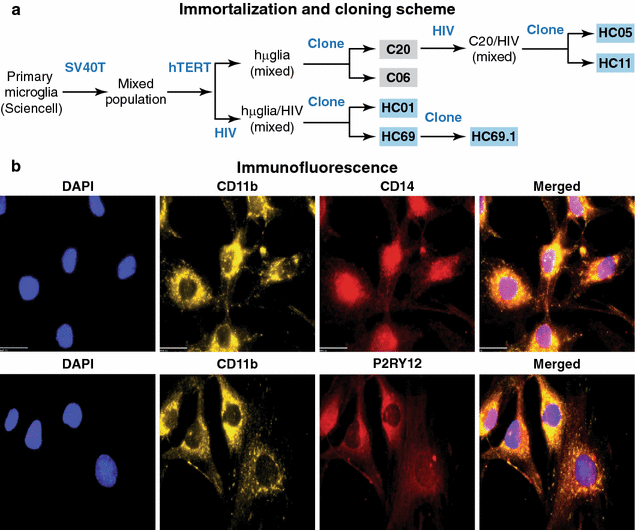
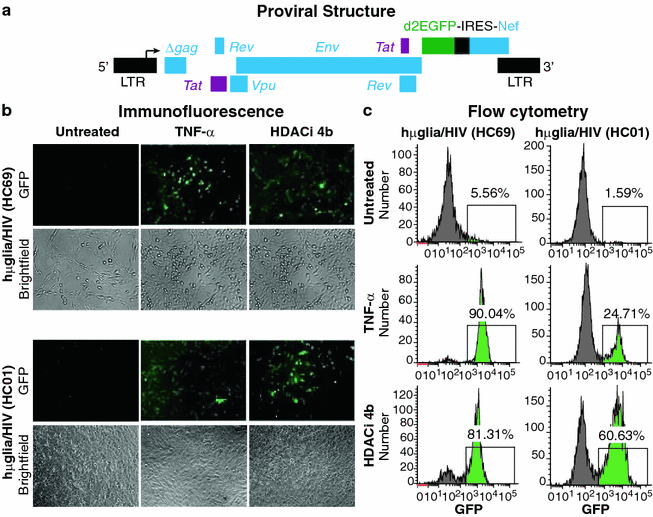
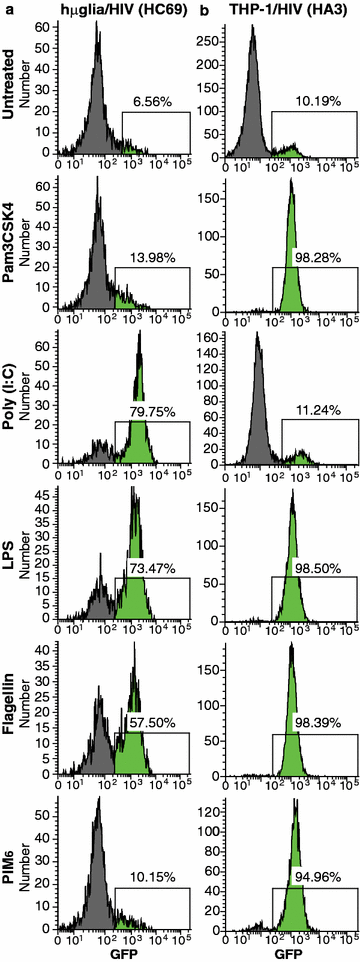
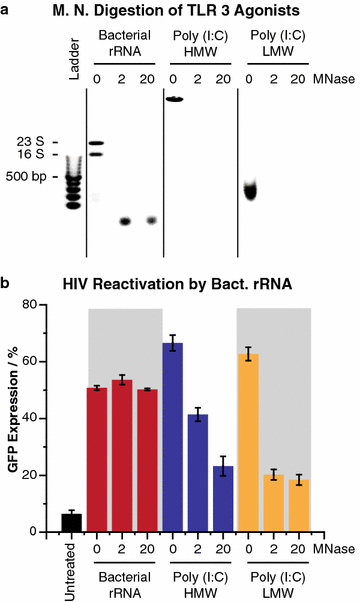
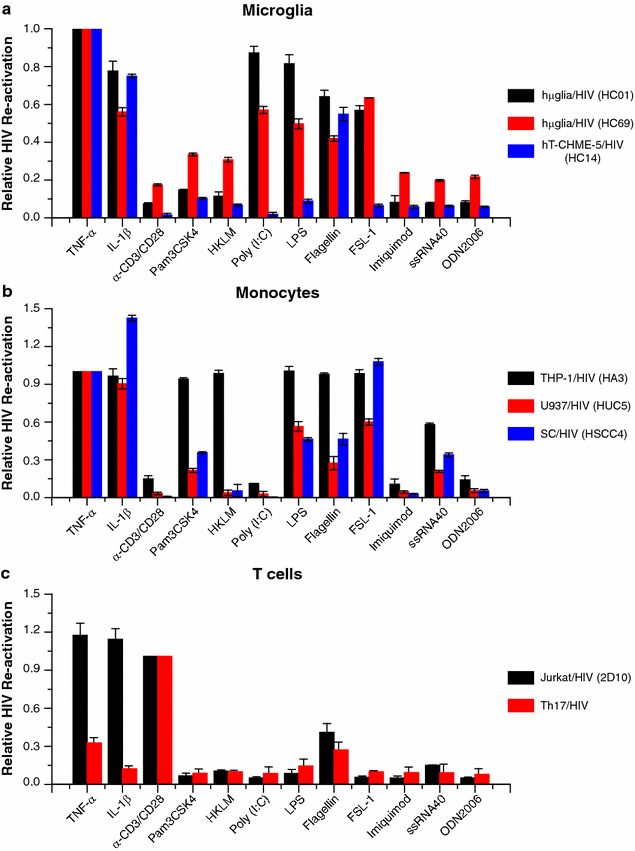
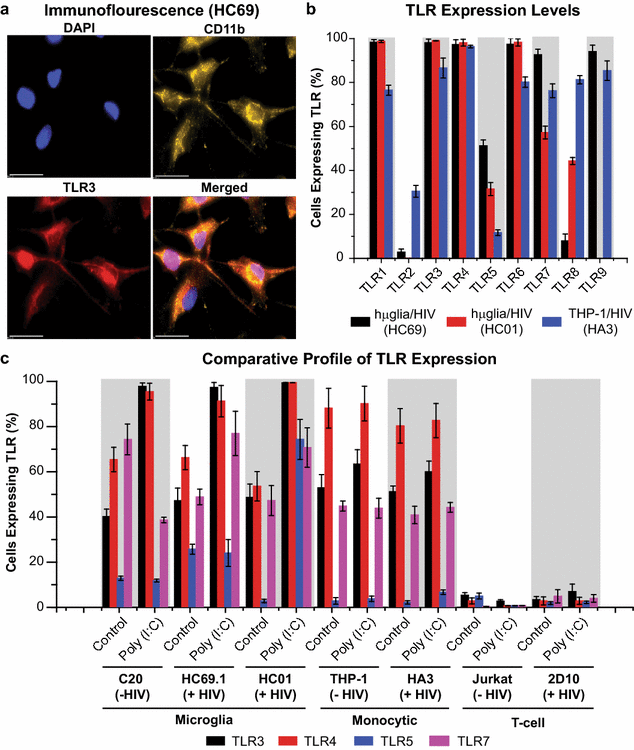

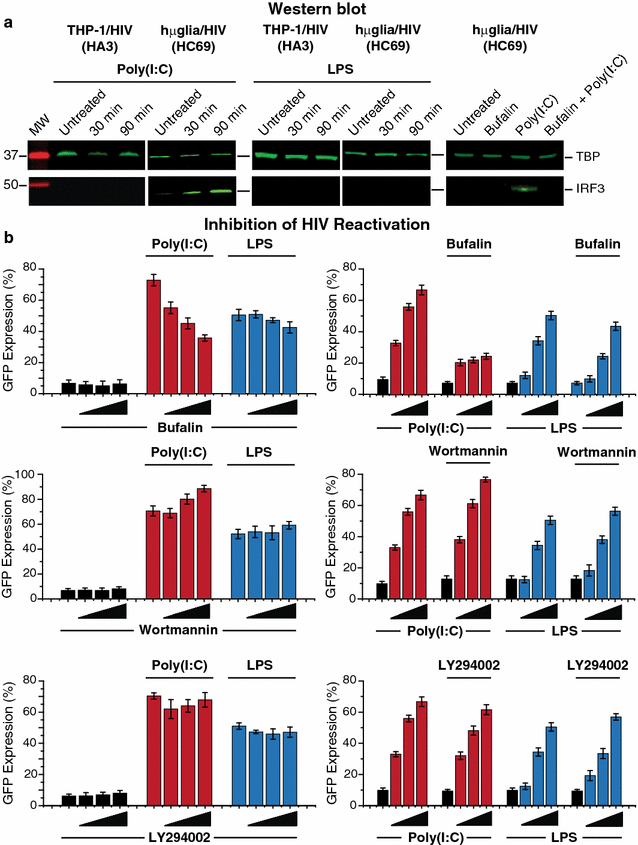
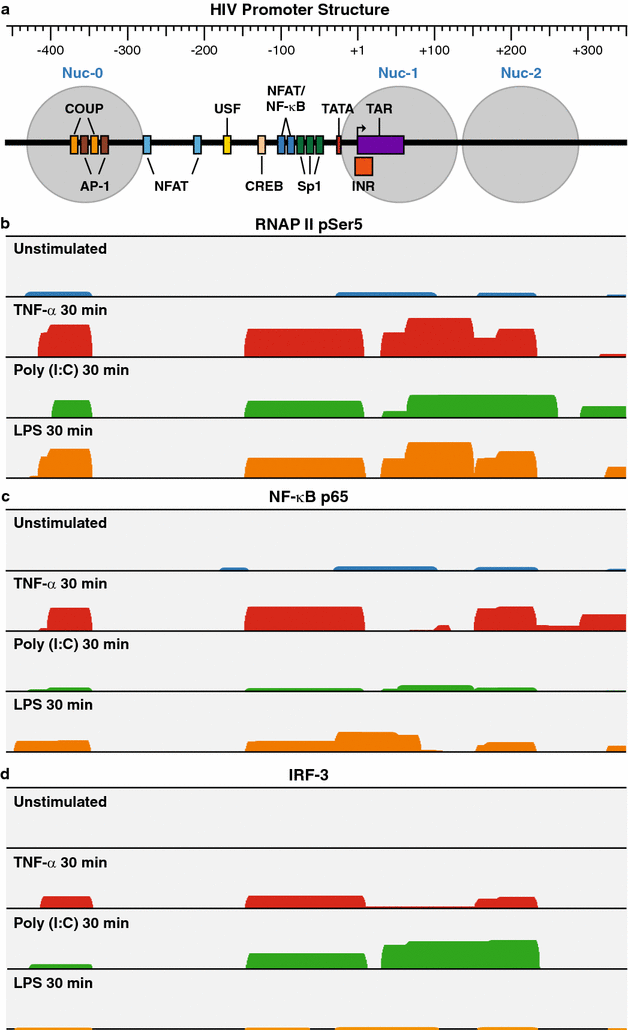
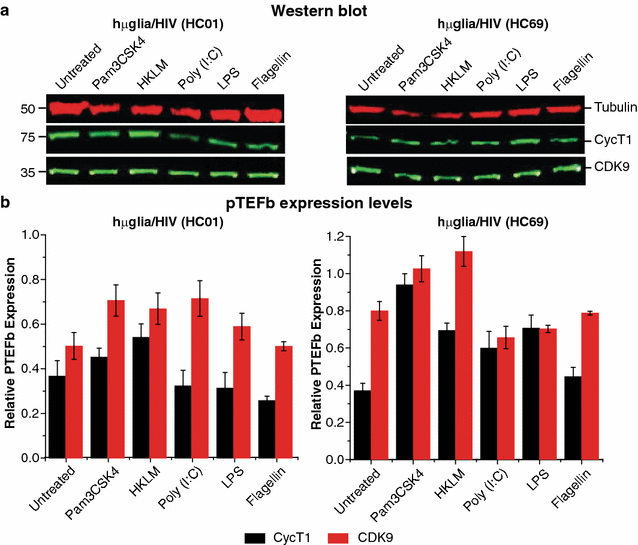
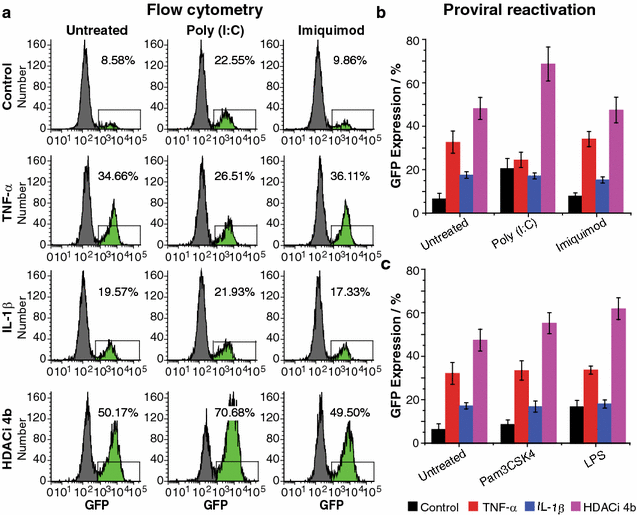
Similar articles
-
Human monocytoid cells as a model to study Toll-like receptor-mediated activation.J Immunol Methods. 2006 Jun 30;313(1-2):1-10. doi: 10.1016/j.jim.2005.07.026. Epub 2006 Apr 25. J Immunol Methods. 2006. PMID: 16720029
-
Mouse primary microglia respond differently to LPS and poly(I:C) in vitro.Sci Rep. 2021 May 17;11(1):10447. doi: 10.1038/s41598-021-89777-1. Sci Rep. 2021. PMID: 34001933 Free PMC article.
-
Hepatitis C Virus NS3 Mediated Microglial Inflammation via TLR2/TLR6 MyD88/NF-κB Pathway and Toll Like Receptor Ligand Treatment Furnished Immune Tolerance.PLoS One. 2015 May 12;10(5):e0125419. doi: 10.1371/journal.pone.0125419. eCollection 2015. PLoS One. 2015. PMID: 25965265 Free PMC article.
-
The Use of Toll-Like Receptor Agonists in HIV-1 Cure Strategies.Front Immunol. 2020 Jun 11;11:1112. doi: 10.3389/fimmu.2020.01112. eCollection 2020. Front Immunol. 2020. PMID: 32595636 Free PMC article. Review.
-
Targeting Cellular and Tissue HIV Reservoirs With Toll-Like Receptor Agonists.Front Immunol. 2019 Oct 15;10:2450. doi: 10.3389/fimmu.2019.02450. eCollection 2019. Front Immunol. 2019. PMID: 31681325 Free PMC article. Review.
Cited by
-
Recruitment of the CoREST transcription repressor complexes by Nerve Growth factor IB-like receptor (Nurr1/NR4A2) mediates silencing of HIV in microglial cells.PLoS Pathog. 2022 Jul 7;18(7):e1010110. doi: 10.1371/journal.ppat.1010110. eCollection 2022 Jul. PLoS Pathog. 2022. PMID: 35797416 Free PMC article.
-
Severer nodular lesion in white matter than in gray matter in simian immunodeficiency virus-infected monkey, but not closely correlated with viral infection.J Biomed Res. 2019 Aug 28;34(4):292-300. doi: 10.7555/JBR.33.20180047. J Biomed Res. 2019. PMID: 32525497 Free PMC article.
-
HIV-1 Productively Infects and Integrates in Bronchial Epithelial Cells.Front Cell Infect Microbiol. 2021 Feb 4;10:612360. doi: 10.3389/fcimb.2020.612360. eCollection 2020. Front Cell Infect Microbiol. 2021. PMID: 33614527 Free PMC article.
-
Protein Expression of TLR2, TLR4, and TLR9 on Monocytes in TB, HIV, and TB/HIV.J Immunol Res. 2024 Apr 17;2024:9399524. doi: 10.1155/2024/9399524. eCollection 2024. J Immunol Res. 2024. PMID: 38660059 Free PMC article.
-
KDM5A/B contribute to HIV-1 latent infection and survival of HIV-1 infected cells.Antiviral Res. 2024 Aug;228:105947. doi: 10.1016/j.antiviral.2024.105947. Epub 2024 Jun 24. Antiviral Res. 2024. PMID: 38925368 Free PMC article.
References
Publication types
MeSH terms
Substances
Grants and funding
LinkOut - more resources
Full Text Sources
Other Literature Sources

